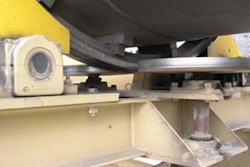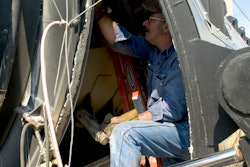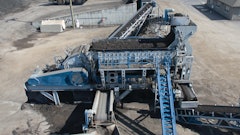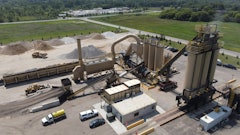
As a part of the Clean Water Act, the Environmental Protection Agency (EPA) implemented regulations that required any facility with a total bulk container storage capacity of 1,320 gallons or greater to develop and implement a Spill Prevention, Control and Countermeasure (SPCC) Plan.
In 2011, revisions to the regulations included the requirement that all bulk containers, including above ground storage tanks (ASTs), be inspected according to a “national industry standard.”
This change to 40 CFR Part 112.8 (c) (6) requires that the plant owner or operator:
“Test or inspect each aboveground container for integrity on a regular schedule and whenever you make material repairs. You must determine, in accordance with industry standards, the appropriate qualifications for personnel performing tests and inspections, the frequency and type of testing and inspections, which take into account container size, configuration and design…”
This was a very significant change that took effect in November 2011. Given the 5-year cycle of review required for all SPCC Plans, this regulation change meant that all facilities subject to the SPCC Plan regulation needed to address the issue of AST inspection by no later than November 2016.
“Following the November 2011 federal rulemaking, and absent a “national industry standard” for inspection of ASTs storing asphalt cement, asphalt paving production facilities needed to determine on a case-by-case basis the proper inspection protocol for their individual tanks,” Bernard Bigham, principal of the Chesapeake Environmental Group and certified tank inspector says. “This protocol needed to be detailed in the site-specific SPCC Plan and approved by the signing P.E., including the scheduling and parameters of the inspection and the qualifications of the inspectors. This was an added regulatory burden to the asphalt paving production facilities.”
So the National Asphalt Pavement Association (NAPA) looked for a way to help its members comply with this new requirement with their 2014 “Guidance for the Inspection of Aboveground Storage Tanks Containing Asphalt Cement at Asphalt Pavement Production Facilities.”
This Publication addressed many (but not all) of the issues facing the facilities in implementing the requirements of 40 CFR 112.8 (c) (6).
In 2016 the EPA approached both NAPA and Steel Tank Institute/Steel Plate Fabricators Association (STI/SPFA) about modifying STI/SPFA’s SP001 Standard to include liquids that are stored at temperatures greater than 200°F.
STI/SPFA assembled their standards committee, including NAPA representatives and throughout 2017 discussed the modifications necessary to enable SP001 to be used as a viable inspection standard for ASTs containing asphalt cement and other similar thermoplastic liquids.
SP001 & Increased Inspections
Following adoption of revisions to the SP001 Standard early in 2018, the STI/SPFA announced that the new edition of SP001 now includes specific standards for the inspections of tanks storing liquids such as asphalt cement, as well as other thermoplastics at temperatures above 200°F.
“When comparing the actual requirements and expectations contained in NAPA’s guidance document with the 2018 version of the STI/SPFA SP001 Standard, the inspection standards involving environmental protection controls weren’t changed much,” Bigham says. “What was changed significantly was the scheduling of the inspections after initial installation, and the procedures for ensuring the inspections were properly done, including the use of STI/SPFA-certified inspectors at applicable intervals. These varied greatly between the NAPA Guidance and the new STI/SPFA SP001.
“With the 2018 changes in place, SP001 is now able to be used for the inspection of not just ASTs storing asphalt cement, but could now also be used to inspect ASTs storing other liquids with similar characteristics at asphalt pavement production facilities, such as additives and heated tack. This is an improvement over the NAPA Guidance, which was limited to ASTs storing asphalt cement only.”
The revisions to SP001 will require ASTs storing asphalt cement to have inspections conducted according to the procedures contained in the new Appendix D – Inspection of Thermoplastic ASTs. Many of these inspections can be performed by knowledgeable facility personnel. Some of the inspections will need to be performed by an SP001 Certified Inspector.
“Generally, the SP001 inspection protocol recommends monthly inspections,” Bigham says. “These can be done in almost all cases by facility personnel (caution - some jurisdictions may requirement more frequent inspections). Shop built tanks that have spill control and Continuous Release Detection Monitoring (CRDM) can be inspected by plant personnel for the entire life of the tank. ASTs lacking spill control or CRDM (such as having the tank elevated) will need at certain intervals to be inspected by an SP001 Certified Inspector. The SP001 Certified Inspector can either be a company employee or a third-party inspector. The training course at the World of Asphalt will go over the specifics of the inspection schedule.
However, Bigham notes that an inspection by a governmental agency is a different matter.
Most regulatory agencies, whether federal, state or local, are not required to inform a facility that they are preparing to inspect that facility. However, as a matter of practicality many agencies do let facilities know of an inspection beforehand. This is done so that the inspection can be done more efficiently and more comprehensively.
“The most important thing facility management can do to have a fair inspection done by a regulator is to have the key people at the facility during the inspection,” Bigham says. “This can’t be stressed enough. If the facility manager is also operating the control room and manning the scales at the time of an inspection, there is no way that individual can properly guide the governmental inspector around the facility or answer the myriad number of questions that will be asked.”
It is critical that facility management have knowledgeable staff assist the government inspector. Sometimes well-meaning but untrained facility personnel can give answers not reflective of company policy. Be certain to have enough trained, trusted personnel on-hand to so that all questions that are asked are given the correct response. If possible, you may want to arrange to have the SP001 inspector you used on-hand to answer questions about how the SP001 inspection was conducted.
“Virtually every facility affected by the new Standard will also have above ground storage tanks and containers containing other regulated liquids, such as diesel fuel, gasoline, fuel oil, used oil, lube oil and transmission fluid,” Bigham says. “Many of the tanks will need to be inspected according to the SP001 Standard, depending on their size, construction and age. It may be cost-effective to have all tanks needing inspection be evaluated at one time.”
For more information on this topic, be sure to attend Bigham’s World of Asphalt Education session, Tue. March 6 2:00 PM - 3:30 PM. Register at www.worldofasphalt.com




















